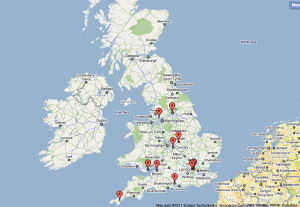As the QTI 2.1 specification gets ready for final release, and new communities start picking it up, conforming tools demonstrated their interoperability at the JISC – CETIS 2012 conference.
The latest version of the world’s only open computer aided assessment interoperability specification, IMS’ QTI 2.1, has been in public beta for some time. That was time well spent, because it allowed groups from across at least eight nations across four continents to apply it to their assessment tools and practices, surface shortcomings with the spec, and fix them.
Nine of these groups came together at the JISC – CETIS conference in Nottingham this year to test a range of QTI packages with their tools, ranging from the very simple to the increasingly specialised. In the event, only three interoperability bugs were uncovered in the tools, and those are being vigorously stamped on right now.
Where it gets more complex is who supports what part of the specification. The simplest profile, provisionally called CC QTI, was supported by all players and some editors in the Nottingham bash. Beyond that, it’s a matter of particular communities matching their needs to particular features of the specification.
In the US, the Accessible Portable Item Profile (APIP) group brings together a group of major test and tool vendors, that are building a profile for summative testing in schools. Their major requirement is the ability to finely adjust the presentation of questions to learners with diverse needs, which is why they have accomplished by building an extension to QTI 2.1. The material also works in QTI tools that haven’t been built explicitly for APIP yet.
A similar group has sprung up in the Netherlands, where the goal is to define all computer aided high stakes school testing in the country in QTI 2.1 That means that a fairly large infrastructure of authoring tools and players is being built at the moment. Since the testing material covers so many subjects and levels, there will be a series of profiles to cover them all.
An informal effort has also sprung up to define a numerate profile for higher education, that may yet be formalised. In practice, it already works in the tools made by the French MOCAH project, and the JISC Assessment and Feedback sponsored QTI-DI and Uniqurate projects.
For the rest of us, it’s likely that IMS will publish something very like the already proven CC QTI as the common core profile that comes with the specification.
More details about the tools that were demonstrated are available at the JISC – CETIS conference pages.

